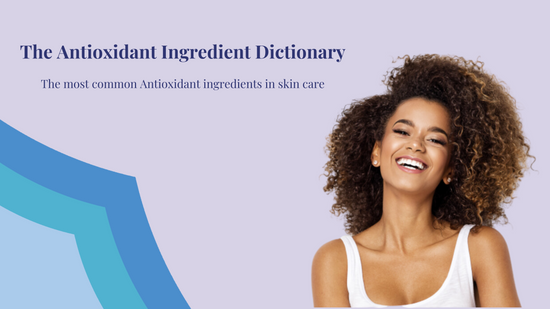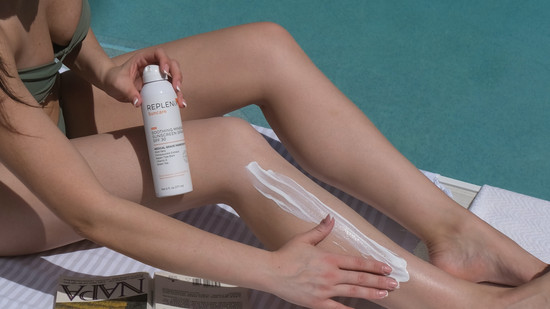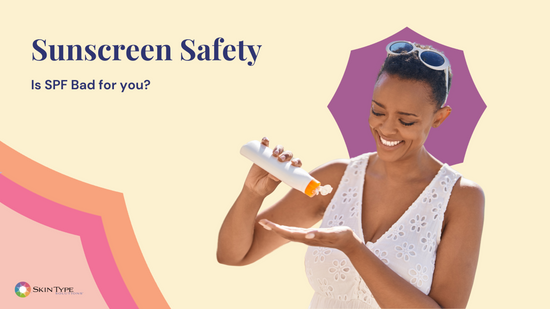Skin Care Science: Polypodium Leucotomos Extract
Polypodium Leucotomos Extract (PLE)
As a dermatologist, I'm always interested in skin care ingredients that work in unique ways. Polypodium leucotomos is one of those ingredients. It is a tropical fern native to Central and South America, and has come under the spotlight for its skin benefits. What makes this ingredient so interesting to me is that its extract is almost exclusively used in oral supplements.
This fascinating plant isn't your ordinary fern—it packs a powerful antioxidant punch against the harmful effects of sunlight, and can treat certain pigmentation conditions. In this comprehensive overview, we'll delve deep into the origins, benefits, and uses of Polypodium leucotomos.
To find out which the best products for your skin type are, take the Baumann Skin Type Quiz for free today with the button below!
Table of contents

What is Polypodium Leucotomos?
Polypodium leucotomos extract, often abbreviated as PLE, is derived from a fern that thrives in the tropical regions of the Americas. Its use dates back to traditional cultures in these areas, where it was used for its health-promoting properties. PLE is rich in potent antioxidants, such as phenolic compounds including caffeic, ferulic, and chlorogenic acids. (2) These components give PLE its ability to ward off harmful free radicals, protect against ultraviolet (UV) radiation, and support skin health in various ways.
Where Does Polypodium Leucotomos Come From?
The Polypodium leucotomos fern grows predominantly in Central and South America, thriving in humid, shaded areas. Historically, it was used by indigenous peoples for its protective properties against sun damage and its general health benefits. Today, the extracts of this fern are studied and utilized worldwide, thanks to modern cultivation and extraction techniques that have made its benefits accessible to a global audience.

Benefits of Polypodium Leucotomos
The benefits of Polypodium leucotomos are primarily linked to its photoprotective and antioxidant properties. Studies show that PLE can significantly reduce the damage caused by UV rays, including reducing the risk of sunburn, preventing redness, and minimizing DNA damage that can lead to skin cancer. (3) Additionally, PLE's anti-inflammatory and immuno-protective properties make it a valuable supplement for maintaining skin health and combating photoaging. Some studies have even found that Polypodium leucotomos is suitable for certain pigmentation conditions such as melasma, vitiligo, and post-inflammatory hyperpigmentation. (1-10)
Here are some of the best skin care products with polypodium leucotomos:
Side-effects/Risks of Polypodium Leucotomos
Polypodium leucotomos extract is generally well-tolerated by most individuals, with few reported side effects. Some people may experience stomach upset or skin rashes, particularly if you take too many of the pills. It is always advisable to start with a lower dose to assess tolerance and consult with a healthcare provider before starting any new supplement, especially for those with existing health conditions or those taking other medications.
"Sunscreen pills are meant to be used in addition to sunblock and sun protective clothing"
How Do Sunscreen Pills Work?
Sunscreen pills containing PLE work by enhancing the body's natural defense mechanisms against UV radiation. When ingested, PLE increases the levels of antioxidants in the skin, which can neutralize the harmful free radicals generated by UV exposure. Additionally, PLE modulates the expression of genes involved in skin inflammation and cellular response to sunlight, providing a systemic form of photoprotection. (5,6)
PLE does not provide enough photoprotection when used alone and should always be combined with sunscreen and sun protective clothing.

Comparing Polypodium Leucotomos with Other Sunscreen Ingredients
When it comes to protecting your skin from the harmful effects of the sun, there are a variety of sunscreen ingredients and products to choose from. Each has its unique benefits and uses, and understanding these can help you make informed decisions about your skin health. Here, we’ll compare Polypodium leucotomos (PLE) with other common sunscreen ingredients to help you gauge its effectiveness and suitability for your skin care needs. Before we get into direct comparisons, it is important to mention that using a topical sunscreen is important, even if you also take sunscreen pills. Topical sunscreens that directly interfere with solar radiation at the surface are always the best bet for sun protection. That's why these sunscreen pills are called "supplements."
Polypodium leucotomos Vs. Chemical Sunscreens
Chemical Sunscreens: These sunscreens, containing active ingredients like avobenzone, oxybenzone, octinoxate, and others, work by absorbing UV radiation through their chemical bonds. As the sunlight hits the skin, these compounds transform UV rays into non-damaging heat which is then released from the skin.
Polypodium Leucotomos: Unlike chemical sunscreens that absorb UV light, PLE acts mainly by neutralizing free radicals and reducing oxidative stress within the skin, which is often a result of UV exposure. This means PLE helps minimize the broader cellular damage caused by sunlight, not just prevent sunburn.
Key Differences:
- Mechanism of Action: Chemical sunscreens absorb UV rays while Polypodium leucotomos provides an internal antioxidant defense, combating the free radicals generated by UV exposure.
- Application: Chemical sunscreens are applied topically and need reapplication every few hours, especially after swimming or sweating. Polypodium leucotomos, taken orally, offers a form of internal sun protection that complements topical sunscreens, especially in hard-to-reach areas.
- Irritation Potential: Some chemical sunscreens can irritate sensitive skin or cause allergic reactions. Polypodium leucotomos is generally well-tolerated, with fewer reported side effects, making it suitable for people with sensitive skin.
Polypodium leucotomos Vs. Physical (Mineral) Sunscreens
Physical Sunscreens: Ingredients like zinc oxide and titanium dioxide are physical blockers that sit on the skin's surface. They reflect and scatter UV radiation before it penetrates the skin. Physical sunscreens are often recommended for those with sensitive skin as they are less likely to cause irritation.
Polypodium Leucotomos: While physical sunscreens protect the skin by forming a barrier on its surface, PLE works from the inside, enhancing the skin's resilience against UV-induced damage through its antioxidant properties.
Key Differences:
- Visibility: Physical sunscreens can leave a white cast on the skin, which some users might find unappealing, whereas Polypodium leucotomos, being an oral supplement, does not affect the appearance.
- Protection Spectrum: Physical sunscreens offer broad-spectrum protection against both UVA and UVB rays. Polypodium leucotomos protection complements this by addressing the oxidative stress caused by these rays.
- Ease of Use: Physical sunscreens require diligent application and can be washed off, requiring reapplication. Polypodium leucotomos offers continuous protection throughout the day with a simple oral dose.
Mineral sunscreens are generally regarded as the best, and I agree in most cases. Here are some of the best mineral sunscreens:
Polypodium leucotomos Vs. Synthetic Antioxidant Sunscreens
Synthetic Antioxidant Sunscreens: These are newer formulations that incorporate antioxidants like Vitamins C and E into traditional sunscreen products to provide added protection against photoaging and free radicals.
Polypodium Leucotomos: PLE naturally contains several potent antioxidants, which provide a less significant amount of protection against free radical damage than most synthetic antioxidants used in sunscreens.
Key Differences:
- Antioxidant Profile: PLE provides a unique blend of natural antioxidants that work synergistically to protect skin cells from UV-induced damage, whereas synthetic antioxidants may not always cover as broad a spectrum of oxidative damage, even though they are generally more effective.
- Longevity of Protection: The antioxidants in PLE are part of your diet and can provide a longer-lasting effect throughout the body, whereas topical antioxidants may degrade more quickly on the skin surface.
Conclusion
Polypodium leucotomos stands out as a natural and effective solution for those seeking to protect their skin from the inside out. Whether you are an avid outdoor enthusiast or someone looking to add an extra layer of protection against photoaging, PLE offers a promising addition to your skincare regimen. Remember, while polypodium leucotomos can significantly boost your skin's defense against sunlight, it should complement, not replace, topical sunscreens and protective clothing. For a holistic approach to skin health, consider incorporating Polypodium leucotomos into your daily routine and always consult with a healthcare provider to ensure it's right for you.

Do sunscreens pills work?
Are sunscreen pills better than regular sunscreen?
Best references on polypodium leucotomos:
- Nestor, M., Bucay, V., Callender, V., Cohen, J. L., Sadick, N., & Waldorf, H. (2014). Polypodium leucotomos as an adjunct treatment of pigmentary disorders. The Journal of clinical and aesthetic dermatology, 7(3), 13.
- Berman, B., Ellis, C., & Elmets, C. (2016). Polypodium leucotomos-an overview of basic investigative findings. Journal of drugs in dermatology: JDD, 15(2), 224.
- Middelkamp-Hup, M. A., Pathak, M. A., Parrado, C., Goukassian, D., Rius-Díaz, F., Mihm, M. C., ... & González, S. (2004). Oral Polypodium leucotomos extract decreases ultraviolet-induced damage of human skin. Journal of the American Academy of Dermatology, 51(6), 910-918.
- Baumann, L. (2005). How to prevent photoaging?. Journal of Investigative Dermatology, 125(4), xii.
- Baumann, L. S. Using oral and topical cosmeceuticals to prevent and treat skin aging, Part I.
- Baumann, L. (2018). How to use oral and topical cosmeceuticals to prevent and treat skin aging. Facial Plastic Surgery Clinics, 26(4), 407-413.
- Baumann, L. (2007). Skin ageing and its treatment. The Journal of Pathology: A Journal of the Pathological Society of Great Britain and Ireland, 211(2), 241-251.
- Allemann, I. B., & Baumann, L. (2009). Botanicals in skin care products. International journal of dermatology, 48(9).
- Baumann, L. (2008). Understanding and treating various skin types: the Baumann Skin Type Indicator. Dermatologic clinics, 26(3), 359-373.
- Segars, K., McCarver, V., & Miller, R. A. (2021). Dermatologic applications of polypodium leucotomos: a literature review. The Journal of Clinical and Aesthetic Dermatology, 14(2), 50.
















































